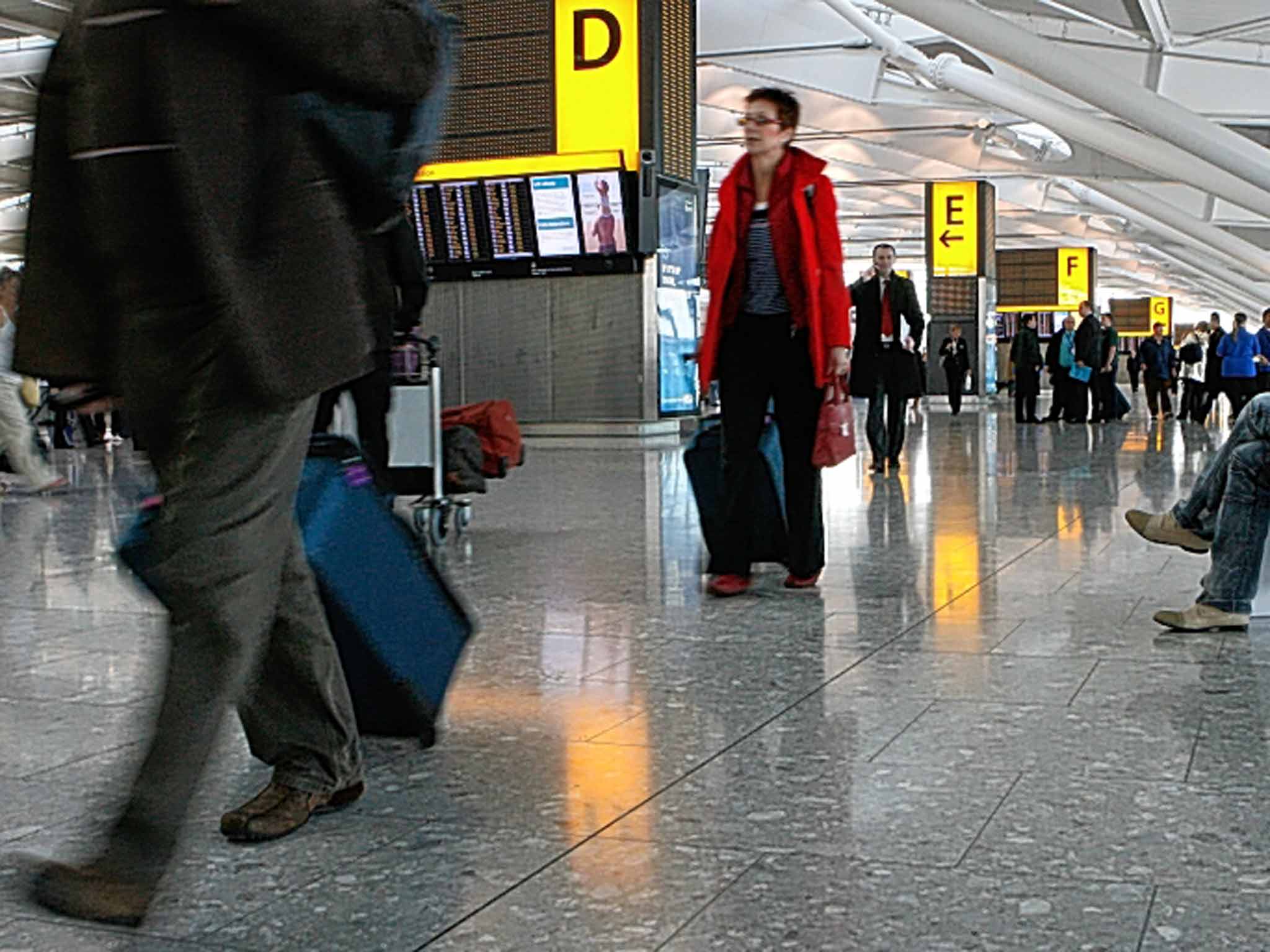Heathrow and Gatwick: Terminal confusion at London's airports
Double-check your departure before flying, says Simon Calder

Your support helps us to tell the story
From reproductive rights to climate change to Big Tech, The Independent is on the ground when the story is developing. Whether it's investigating the financials of Elon Musk's pro-Trump PAC or producing our latest documentary, 'The A Word', which shines a light on the American women fighting for reproductive rights, we know how important it is to parse out the facts from the messaging.
At such a critical moment in US history, we need reporters on the ground. Your donation allows us to keep sending journalists to speak to both sides of the story.
The Independent is trusted by Americans across the entire political spectrum. And unlike many other quality news outlets, we choose not to lock Americans out of our reporting and analysis with paywalls. We believe quality journalism should be available to everyone, paid for by those who can afford it.
Your support makes all the difference.Airline passengers who are accustomed to turning up at a particular terminal for their flight from London's leading airports face confusion this year and next. Dozens of airlines are set to change terminals – and even airports – as the capital's squeeze on capacity gets ever more intense. One result: easyJet will get its own "fortress" at Gatwick North, mirroring BA's Terminal 5 at Heathrow.
Britain's two busiest airports, Heathrow and Gatwick, have just revealed record-breaking years – jointly topping 111 million passengers. Even without counting Stansted, Luton and London City, that places the capital way ahead of any other city on earth. They have grown from one terminal each to a total of seven – five at Heathrow, two at Gatwick.
Starting in March, Heathrow will see a round of terminal swaps over the summer. On 25 March, Icelandair moves from 1 to 2. A month later, El Al also vacates 1 for 4, and on 27 May TAM shifts from 1 to 3. In addition, Heathrow picks up Vietnam Airlines from Gatwick on 31 March; flights to Hanoi and Ho Chi Minh City will depart from 4.
More changes happen on 30 June – when the oldest surviving Heathrow passenger facility, Terminal 1, closes down. By that stage, British Airways will be the only tenant. Passengers to the four Middle East destinations, Amman, Beirut, Baku and Cairo, get the privilege of flying from BA's flagship Terminal 5. Travellers to Hanover, Luxembourg, Lyon, Marseille and Bilbao, though, go only as far as Terminal 3 – which houses BA's partners in the Oneworld alliance including American Airlines, Cathay Pacific and Qantas.
Passengers on eight key long-haul flights – to Miami, Denver, Phoenix, Las Vegas, Vancouver, Cape Town, Accra and Nairobi – may be dismayed to see that these flights will move from 5 to 3 on 14 October. Terminal 3 was the long-haul base for British Airways in the 1970s and early 1980s, until Terminal 4 opened. Services shifted again to the new £3.4bn Terminal 5 in 2008. But this has proved inadequate for all BA's flights, and Terminal 3 is being upgraded to handle the overspill.
Once the moves are complete Terminal 5 will be home to 82 per cent of BA's destinations.
BA also this week revealed to staff its intention to shift all Gatwick flights from the North Terminal to South – where the airport's railway station is located. The likely timing is November 2016.
The move will allow easyJet to consolidate all its operations at North Terminal. Gatwick is easyJet's biggest base, but its flights are currently split between both terminals. This causes confusion for passengers, who can turn up at the wrong terminal – or find that their arrival terminal is different from the one they flew out from.
As BA heads south, Virgin Atlantic is moving in the opposite direction and will move its Gatwick operation to the North Terminal – where it will join existing tenants including Emirates, Thomson Airways and Turkish Airlines.
Join our commenting forum
Join thought-provoking conversations, follow other Independent readers and see their replies
Comments